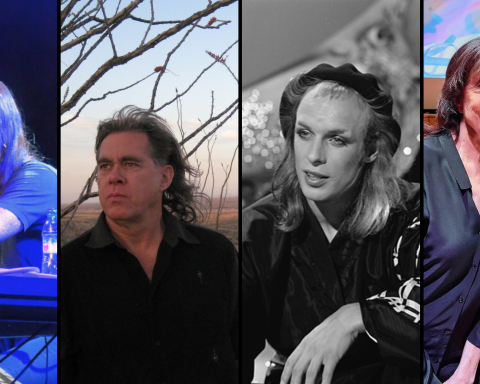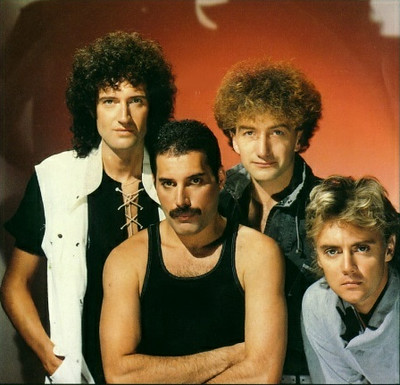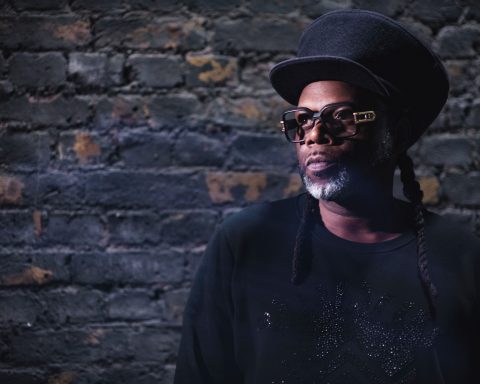Roland has a long and varied history of hardware samplers. It stretches from before the explosion of sample-based dance music in the late 1980s to the company’s most recent device, the SP-404MKII. During that time, Roland has helped birth a few new genres of music as well. As with its other hardware developments, Roland’s sampling technology moved through numerous iterations over the decades. Let’s revisit Roland’s sampling past and take in a few highlights along the way.
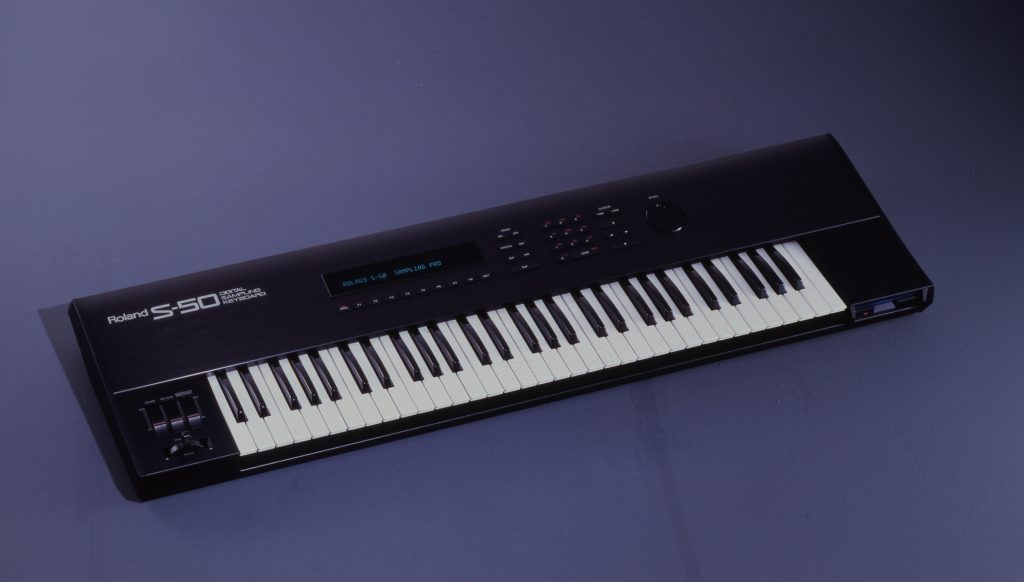
The Debut of the S
Roland entered the sampling music market in 1986 with the S-50. The keyboard positioned itself between instruments for pop royalty and low-cost, low-fidelity choices. Roland’s S-50 was a professional sampler at an affordable price.
The S-50 had 16-voice polyphony, and better yet, it was four-part multitimbral. It even had four outputs for easy mixing. It offered support for an external CRT monitor, which meant you could display the waveform on a TV screen and edit it visually. Take that, Fairlight. Roland even sold a digitizer tablet for waveform editing with an electronic stylus called the DT-100. Talk about ahead of the curve.
It was 12-bit, which was decent for the time, with sampling resolution available at 30kHz or 15kHz. The latter was useful for extending sampling time from 14.1 seconds to 28.8 seconds. Although it had high and lowpass digital filters, they weren’t real-time. That would have to wait another year for the rackmount version, the S-550, and its TVF (Time Variant Filter), ported over from the D-50. A slimmed-down keyboard version, the S-10, was also made available for budget-conscious customers.
"The S-550 workstation also came with a selection of factory samples to load using the floppy disk drive."
A Prodigy in the Making
By 1989, sampling was all the rage. Roland quickly became part of the movement helping redefine what music could be with this new technology. The company took the workstation concept (which was popular at the time) and combined it with a keyboard sampler. They based the latter on the S-50/S-550/S-330 series, a PCM synthesizer engine, and a sequencer. The result was the W-30.
Although still 12-bit, with the same sample memory as its S-50 parent, the engineers increased its timbral capacity to eight parts. The built-in ROM contained 128 tones and 32 patches, featuring 70 samples of drums, basses, pianos, and basic synth sounds. Users could program these using the real-time filter from the S-550, the envelope, and LFO. The workstation also came with a selection of factory samples to load using the floppy disk drive. Well, it was 1989.
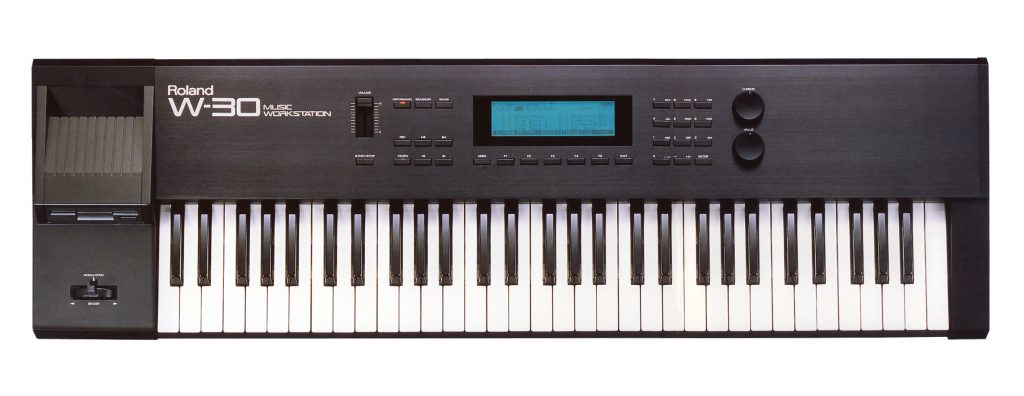
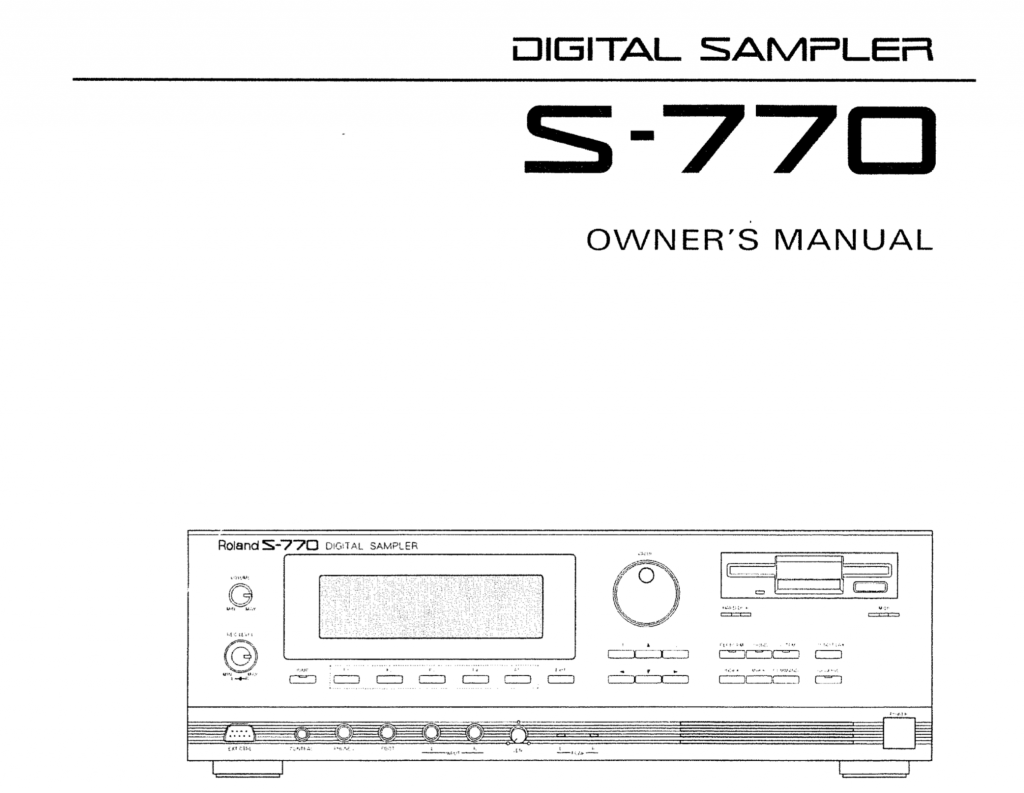
The sequencing portion of the W-30 came from the MC-300 and MC-500 sequencers. These could store up to 20 songs in the onboard memory—more if you saved them to disk. The W-30 is best known for being the weapon of choice for Liam Howlett of Prodigy. Indeed, he used it on all the group’s records up to The Fat Of The Land. Hip-hop producers took to it too, especially Erick Sermon of EPMD and DJ Paul of Three 6 Mafia.
High Fidelity
While today’s aficionados appreciate 12-bit sampling for its grit, at the time, the trend was for ever-higher fidelity. With that in mind, Roland released the rackmount S-770 sampler in 1990. With 16-bit stereo sampling at up to 48kHz, it had a polished and up-to-date sound. Users could adjust it via the TVF and TVA (Time Variant Amplifier). The S-770 (and its lower-priced cousin, the S-750, released in 1991) are renowned for their warm presence and are still valued.
"Dubbed Sampling Workstations, the DJ-70s had a three-octave keyboard, trigger pads, and a DJ-style scratch wheel."
Hey DJ
Not every product is an instant hit. Often, it’s so far ahead of the curve that the world isn’t ready. Take the DJ-70 (1992) and its follow-up, the DJ-70MKII (1996), for example. Roland Italy, which developed the DJ-70 samplers, intended them for use in the then-expanding worlds of dance music and hip-hop. Dubbed Sampling Workstations, the DJ-70s had a three-octave keyboard, trigger pads, and a DJ-style scratch wheel. Engineers based the internal structure on the S-770 sampling engine. As a result, it had 16-bit sampling at 22.05Hz or 44.1kHz plus 24 voices of polyphony.
Particularly worth mentioning are the forward-thinking functions. Along with real-time filter and envelopes, plus three LFOs, it was capable of resampling. Lo-fi producers, take note. Users could combine two samples using one of six algorithms taken from the JD-990. It also offered signal paths with various combinations of TVF, TVA, and ring modulation. There were also real-time sampling and phrase sequencing with the RPS (Realtime Phrase Sequencer). The DJ-70MKII added more memory and beefed up the sequencer, adding BPM sample control, allowing users to sync all the samples to a master tempo. The company proved itself ahead of the curve again, a trend that would grow into a theme.


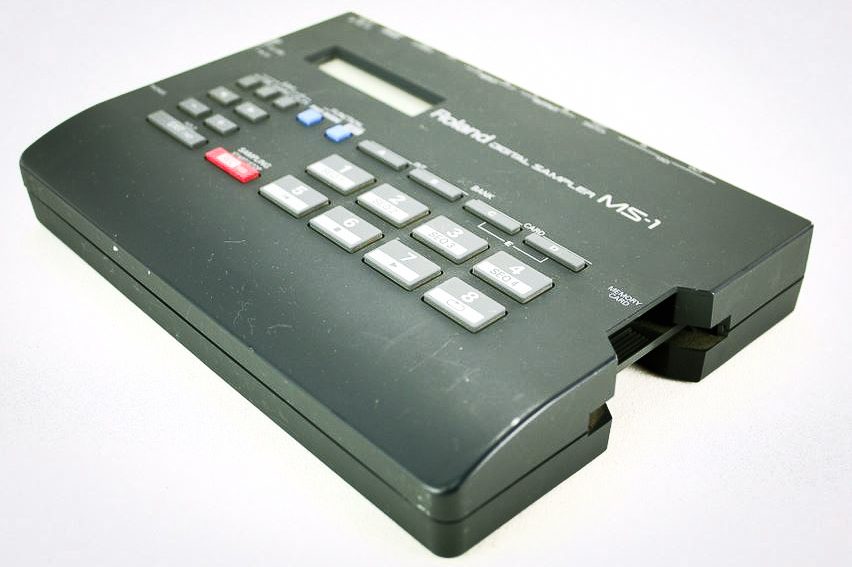

Granddaddies of the SP
By the mid-’90s, rackmount samplers had reached their peak, and technology was moving in a different direction. Much like with the DJ-70, Roland could see the potential for a sampling device with a built-in sequencer. This reached its pinnacle with the SP-404 devices, but that was still a few years off.
In 1994, Roland debuted the MS-1, the grandfather of the SP-404. Referred to as a phrase sampler, the MS-1 dispensed with the keyboard altogether. It replaced it with two rows of now-familiar numbered pads. These were, of course, for triggering samples. There were four levels of sample quality, which users could choose at the time of recording. They were: High (44.1kHz/32.07kHz), Standard (32kHz/23.27kHz), Long-1 (22.05kHz/16.04kHz), and a gloriously lo-fi Long-2 (16kHz/11.64kHz).
Although there were no onboard effects, you could control the pitch of the samples and edit start, end, and loop points. Canadian underground hip-hop producer Sixtoo and Prefuse 73 favorite, Eliot Lipp made great use of the MS-1. The same year, Roland released the JS-30, also a desktop unit. Instead of numbered pads, JS-30 had 13 black and white pads arranged to resemble a single octave on a keyboard. It could sample at either 8-bit or 16-bit with eight voices of polyphony. It also had 36 dance music-focused PCM samples in its onboard ROM, making it something of a Groovebox ancestor.
"In 2003, Roland repurposed its VariPhrase technology into the V-Synth, a flagship keyboard with a built-in sampler."
V For VariPhrase
Before we get to the SP series, let’s take a quick jog over to the early naughts and two envelope-pushing, V-monikered sampling devices. These days, we take elastic audio for granted. Ableton Live, which debuted in 2001, was the first DAW. It capitalized on stretching audio to match any tempo without changing speed or losing fidelity. Roland beat it to market with the VP-9000 VariPhrase Processor in 2000.
A rackmount sampler with six voices of polyphony, the VP-9000 used Roland’s VariPhrase algorithm to do everything to audio we now take for granted: alter time and pitch. In fact, with real-time MIDI control over pitch, time, formant, and groove, its technology was a precursor to ZEN-Core. Oh, and Daft Punk’s famous robot vocals? They used a VP-9000.
In 2003, Roland repurposed its VariPhrase technology into the V-Synth, a flagship keyboard with a built-in sampler. The 24-voice instrument combined analog modeling, PCM waveforms and sampling, and external processing. Players could modulate the sample-based portion of the synthesis architecture via VariPhrase. This allowed for stretching, pitch-shifting, and even freezing. Two D-Beams, a Time Trip Pad for hands-on modulation, and plenty of effects made it utterly unique. Duran Duran, Orbital, and others favored the instrument and its rackmount version, the V-Synth XT.


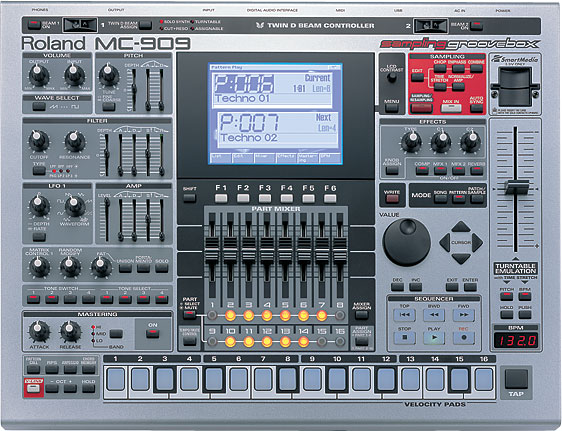

The First SPs
The ’90s were all about the Groovebox. These all-in-one music production devices were everywhere, and Roland invented the term with the MC-303. Considering the direction of the sampling division since the DJ-70, it made sense to incorporate sampling into these boxes. The now-famous SP line was born from this lineage.
The first SP, 1998’s SP-202 Dr. Sample, was actually released as a BOSS product. Intended for looping material and triggering sound effects, it had eight numbered pads and four banks for sounds. There were just two knobs–one for volume and one for control. It was capable of 4 minutes and 20 seconds of internal sampling time with user-selectable sampling quality for each pad. A large part of its appeal lay in its effects section, which included pitch and time shift, two filters, delay, and ring modulation. Fatboy Slim and hip-hop producer, Tobacco both utilized the SP-202.
Three years later, BOSS upgraded the 202 into the SP-303 Dr. Sample. It also had eight pads and four banks, but the knob count increased to the now iconic four. Although it had less onboard sampling time, the effects section expanded. The new version included the now popular vinyl simulation plus reverb and tape echo, among other effects. The 303 was popular with both indie acts like Animal Collective, electronic producers such as Four Tet, and hip-hop beatmakers. Madlib made most of the Madvillainy album with it, as did J Dilla on his Donuts release. Both the 202 and 303 were also used by dancehall DJs as soundboards for dub sirens and in live theater and television for triggering sound effects.
"Like its predecessors, the SP-404 had a grid of numbered pads for sample triggering. This time there were 12 instead of eight."
SP-808 and SP-808EX
In 1998, Roland released the SP-808, another link in the historical chain leading up to the SP-404MKII. A phrase sampler, it could play four stereo samples simultaneously and was capable of sampling at 44.1kHz and 32kHz. Moreover, the unit was a hard disk audio recorder. It had a variety of effects plus a D-Beam. The SP-808EX and its translucent plastic case followed in 2000, adding a monophonic synthesizer and extra effects to the mix.
MV-8000 and MV-8800
Roland’s sampling history continued into the 2000s with the MV-8000 (2003). Aimed at hip-hop and R&B producers, it was an all-in-one music production studio. With its 16 trigger pads, large LCD screen, and eight slider controls, it could do it all: sampling, sequencing, and mixing. It even allowed CD burning via the onboard CD-RW drive. In 2007, Roland released the follow-up model, MV-8800. There were several improvements, including a color LCD screen and the ability to connect a monitor and mouse.
Additional Sampling Technology
There have been other Roland landmarks as well. Sampling came to pad percussion with the Roland SPD-S, which led the way to the ubiquitous SPD-SX. Additionally, the BOSS Loop Station family consists of samplers optimized for sound-on-sound looping performance. The FANTOM-S introduced the concept of Skip Back Sampling to Roland, now a feature 0f the SP-404MKII.
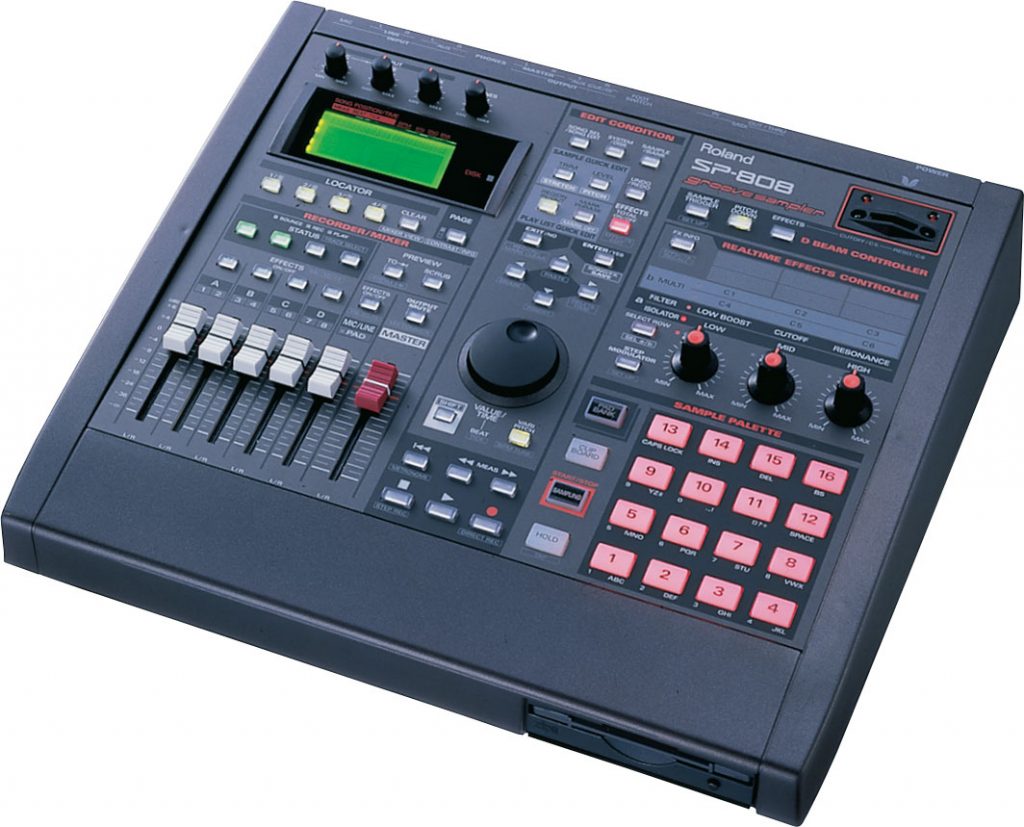
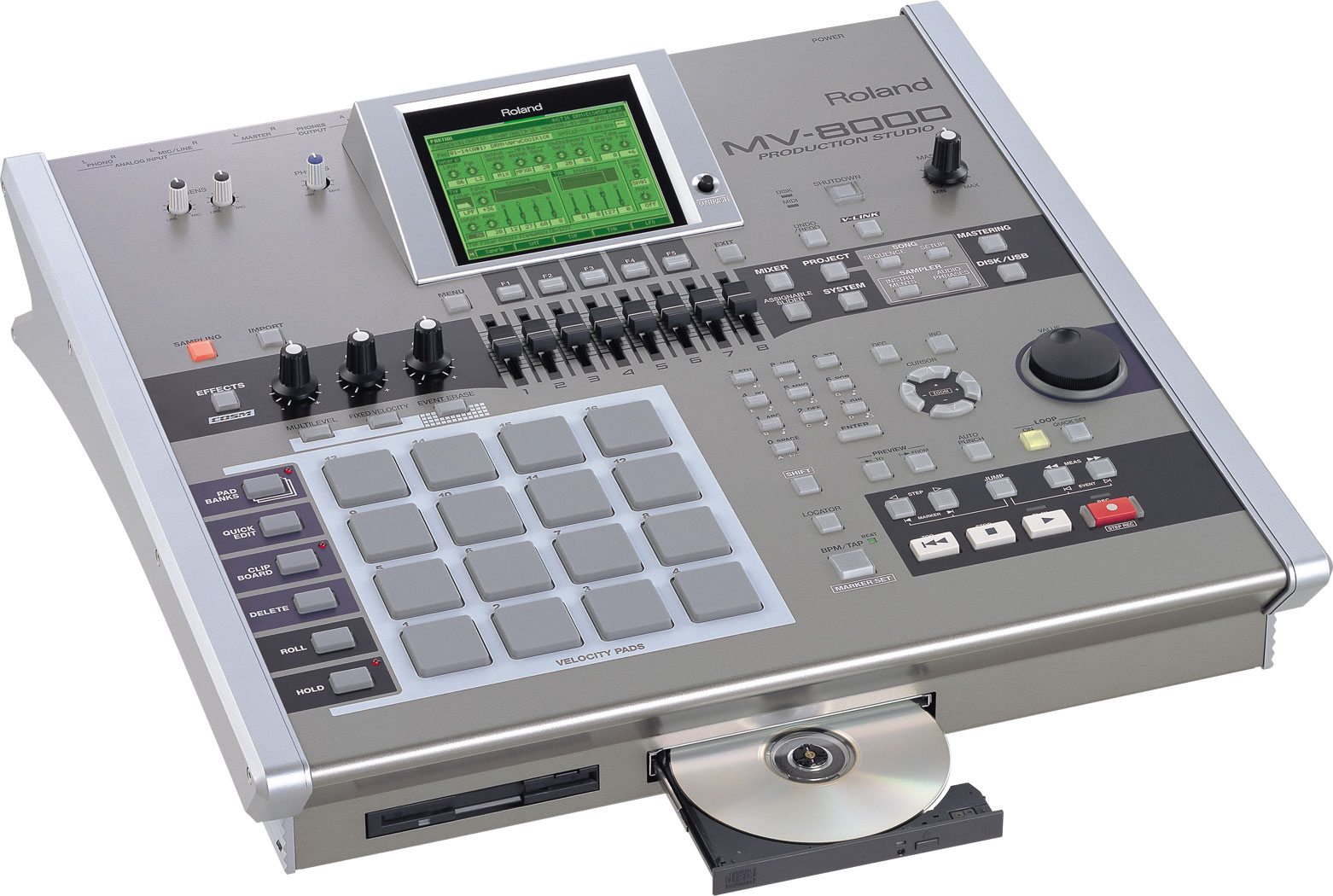
The Birth of Lo-Fi
After the release of the BOSS SP-303 Dr. Sample and the SP-505 (2002), the SP synthesizer design team moved over to Roland. They refined the phrase sampler aesthetic, which culminated in the release of the first SP-404 in 2005. Like its predecessors, it had a grid of numbered pads for sample triggering. This time, however, there were 12 instead of eight.
Beatmakers could sample through the line/mic-in jacks (hit the Lo-Fi button to extend sampling time), or import via Compact Flash card. They could also apply the onboard effects—all 29 of them—to multiple samples at the same time. You could do the same thing to an external audio signal, making it an effects processor as well.
In 2009, Roland upgraded the 404 in the form of the SP-404SX, which added shuffle to its pattern sequencer as well as new, higher-quality effects. Its Lo-Fi mode got an upgrade as well. Whereas the original extended sampling time, the new version emulated the character of the SP-303. Using this in combination with other effects while resampling became the preferred workflow for instrumental hip-hop producers who started calling their new genre lo-fi.
"With almost four decades of Roland sampling DNA in its makeup, the SP-404MKII is a worthy continuation of the legendary Roland sampling lineage."
Community-Building
Lo-fi is more than a genre of music, however. It’s also a community. Part of this is the genre’s YouTube presence. Another part is the aesthetic that grew around the customization of 404 faceplates. Because the front plate utilizes easily accessible screws, it’s quite easy to remove it and add custom designs. There’s an entire cottage industry dedicated to selling SP-404 skins. This makes the appearance of the machine as unique as the artist’s personal workflow.
The machine is also an integral part of the L.A. Beat Scene, with Flying Lotus a confirmed user. Other practitioners of SP-404 arts include producers Ras G, Dibia$e, and Mndsgn. An additional version of the sampler, SP-404A, debuted in 2017. This added sequencer integration with Roland’s TR-8 drum machine.
SP-404MKII
Thirty-five years of Roland sampling history have culminated in the release of the SP-404MKII. With its OLED screen, 16GB of internal storage, chromatic play, and new Skip Back Sampling mode, it’s very modern and reflects the technology of 2021. With almost four decades of Roland sampling DNA in its makeup, the SP-404MKII is a worthy continuation of the legendary Roland sampling lineage.




